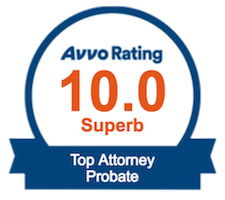Workplace Health and Safety: Essential Information
Navigating Health and Safety Regulations in Your Workplace
Understanding your rights and obligations regarding workplace health and safety is paramount. Below is a breakdown of frequently asked questions on the subject.
What Legal Framework Ensures My Safety at Work?
Under both federal and state legislations, your right to a secure workplace is protected. The chief federal statute, the Occupational Safety and Health Act of 1970 (referred to as the “OSH Act”), is a cornerstone in safeguarding American workers. For information tailored to your state’s safety laws, reaching out to your state labor department is recommended.
What Does the OSH Act, Enforced by OSHA, Entitle Me To?
Remarkably, the OSH Act entitles you to refuse work should it pose an immediate threat to your life. But the scope of the Act extends beyond imminent danger. Empower yourself by understanding and exercising your rights under the Act:
- Receive employer-provided training on applicable health and safety standards.
- Obtain knowledge on handling dangerous chemicals and minimizing exposure risk.
- Learn about additional health and safety threats relevant to your role, such as construction or biohazards.
- Request detailed information from your employer regarding OSH Act standards, injury and illness statistics, potential job hazards, and consequent workers’ rights.
- Actively seek remedies from your employer for hazards or OSH Act infringements.
- Lodge a complaint with the Occupational Safety and Health Administration (OSHA).
- Invoke OSHA’s oversight with a workplace inspection request.
- Access reports from OSHA inspections.
- Pursue a complaint against employer retaliation for utilizing your rights under the OSH Act.
- Petition the federal government to investigate potential workplace hazards.
For further details on OSHA or to contact your nearest OSHA office, do visit the U.S. Department of Labor’s Occupational Safety and Health Administration website at www.osha.gov.
How Should I Respond if I’m Injured at Work?
In the unfortunate event of a workplace injury, it’s crucial to take swift action post-receiving appropriate medical care:
- Promptly claim workers’ compensation benefits to cover medical expenses and compensate for lost wages or injury. In some instances, compensation may be amplified if your injury is linked to a violation of state workplace safety laws.
- Notify your employer of any persisting hazards or dangerous conditions in the workplace.
- If your employer fails to address these hazards swiftly, escalate the issue by filing a complaint with OSHA and any relevant local agencies.
- In scenarios where an immediate risk to life is identified, utilize OSHA’s emergency line at 800-321-OSHA (6742).
Is OSHA Involved in Addressing Tobacco Smoke at Work?
OSHA oversight in tobacco smoke matters is generally limited to extreme cases, such as when tobacco smoke interacts with other contaminants, culminating in subpar workplace air quality that breaches OSHA regulations. Air quality assessments often necessitate expertise from OSHA agents or environmental testing consultants.
At Goldberg & Goldberg, we recognize the complexity surrounding workplace health and safety. Our firm is committed to providing knowledgeable legal counsel to ensure your rights are protected. For further assistance or queries on workplace safety issues, do not hesitate to contact us at (301) 654-5757 for a Free Consultation. Our team is dedicated to advocating for a safer and legally compliant work environment for all.




